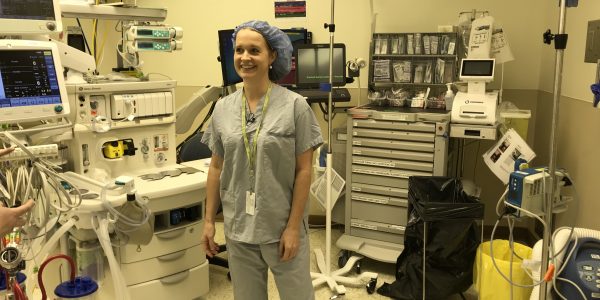Dr. MacNeill publishes ground-breaking study on the carbon footprint of surgical suites
In the first study of its kind, VGH Surgeon Dr. Andrea MacNeill analysed the carbon footprint of surgical suites at three hospitals in Canada (VGH), the United States (University of Minnesota Medical Centre), and the UK (John Radcliffe Hospital, Oxford). Dr. MacNeill found the choice of anaesthetic gases used in surgery can be a major contributor to greenhouse gas emissions from operating rooms.
The study, published in The Lancet Planetary Health journal, found that it’s possible to reduce emissions in health care settings and reduce costs. Researchers measured the direct emissions, (gases), indirect emissions (electricity) and other emissions (surgical waste) according to the Greenhouse Gas Protocol. The data was collected and evaluated in 2011.
Interesting facts about the study
- The annual carbon footprint of surgical suites ranged from approximately 3218 tonnes of CO2 equivalents (CO2e [1]) to 5187 tonnes of CO2e. While there were differences in the size and case load among all three surgical suites, there was also wide differences in the major contributors to greenhouse emissions. For instance, at Vancouver and Minnesota, anaesthetic gases were responsible for 63% and 51% of the total surgical emissions, compared to only 4% at Oxford. (excerpt from The Lancet Planetary Health journal).
- According to Dr. MacNeill, itt means that surgeries are approximately equal to 2 million cars on the road every year.
How VGH is reducing its carbon footprint
VGH is already making changes based on the findings. When the study was done in 2011, the default was desflurane, one of the primary contributors to global anaesthetic gas emissions and one of the most expensive anaesthetic gases. Desflurane is still used, but it’s no-longer the “go to” gas at VGH.
“It wasn’t difficult to switch,” said anaesthesiologist Mitch Giffin. “There wasn’t a significant difference from a patient perspective.”Additionally, an anaesthetic gas capture system will be built into the new operating room project (internal link) at VGH.
“The 16 new operating rooms afford us an opportunity to do what’s right for the environment and our patients,” said Shelly Fleck, OR Operations Director, VCH.

